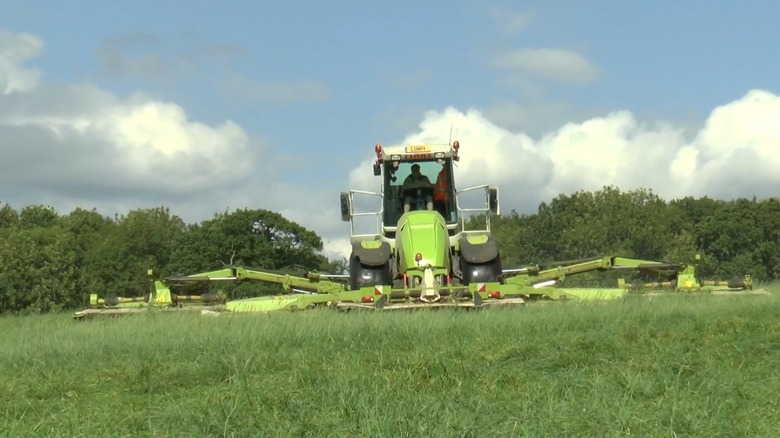The CLAAS Cougar: The World's Largest Mower (And Why It Won't Work on Your Lawn)

The Colossal Power of the CLAAS Cougar 1400
While a 60-inch zero-turn mower might make you feel like a king of your lawn, it's nothing compared to the sheer size and power of the CLAAS Cougar 1400. This machine is often considered the world's largest self-propelled mower, and it dwarfs even the famous Big Bud, the largest tractor ever built. The Cougar 1400 features an impressive five cutting decks—three in front and one on each side. Depending on the configuration, this allows for mowing swaths up to 45 feet wide, all while operating at speeds of up to 13 miles per hour.
With 480 horsepower, mechanical four-wheel drive, and a DISCO cutterbar design, the Cougar 1400 is built for performance and durability. It’s engineered to handle tough terrain and heavy-duty tasks, making it a powerhouse in the agricultural industry. However, despite its impressive capabilities, there are several reasons why you or your neighbors will never own one of these massive machines.
Firstly, CLAAS no longer produces the Cougar 1400, and only a few models are available through auctions. For example, one model was listed on Farmers Weekly and sold in 2022 in the U.K. for £39,000 ($51,924). Additionally, the Cougar 1400 is designed for large-scale farming operations that cover hundreds of acres. Its size makes it impractical for residential use, as it would be impossible to store in a typical neighborhood and difficult to maneuver in tight spaces.
How the CLAAS Cougar Compares to Other Mowers
The CLAAS Cougar operates similarly to a tractor with mowing implements attached. It uses rotary decks with spinning blades that can handle overgrown fields and process large amounts of vegetation, even on rugged terrain. While the original price of the Cougar was around $475,000, it’s not the most expensive equipment from CLAAS. The manufacturer has produced some of the most expensive tractors ever made, but the Cougar stands out for its sheer scale and efficiency.
Despite its ability to cover large areas quickly, the CLAAS Cougar doesn’t provide the same level of precision as a standard lawn mower. The cut is more functional than aesthetic, making it unsuitable for maintaining a manicured yard. Instead, it's used primarily in agricultural settings where efficiency and coverage are more important than appearance.
Why Farmers Use Large Mowers
Farmers use large mowers like the CLAAS Cougar for various reasons, including improving livestock grazing conditions. Overgrown fields can become dense with vegetation, including stems and seed heads that animals avoid. By using a powerful mower, farmers can remove unwanted plant parts and encourage the growth of more nutritious leaves, which benefit their livestock.
This kind of mowing is essential for maintaining healthy pastures and ensuring that animals have access to quality feed. While the CLAAS Cougar is ideal for large-scale operations, it’s not practical for everyday homeowners who need a more manageable solution for their yards.
The Rise of Massive Residential Mowers
For those not involved in agriculture, the largest mower they might encounter is a zero-turn model. Residential models typically come with 60-inch cutting decks, while commercial units like the Kubota diesel zero turn offer up to 72 inches. Another manufacturer, Lastec, has introduced the WZ1000, a model capable of mowing a swath 120 inches wide, equivalent to nearly nine acres per hour.
However, such machines are not cheap, starting at around $48,900. They’re also too large for most residential properties but are well-suited for maintaining sports fields and golf courses. While it’s tempting to imagine how quickly you could mow your lawn with one of these giants, the reality is that they’re better suited for large-scale operations rather than personal use.
Choosing the Right Mower for Your Needs
Ultimately, the best mower for your yard depends on your specific needs and the size of your property. While massive machines like the CLAAS Cougar 1400 and Lastec WZ1000 offer incredible efficiency, they’re not practical for everyday homeowners. Instead, investing in a unit that matches the size of your lawn will provide the best balance of performance, cost, and usability.
If you're interested in staying updated on the latest trends in technology and auto, consider subscribing to a free newsletter that delivers expert guides, how-to tips, and the latest headlines directly to your inbox.
Komentar
Posting Komentar